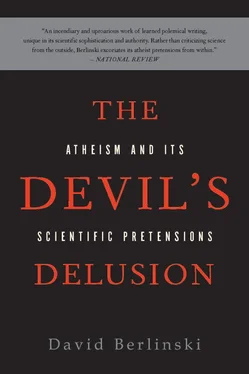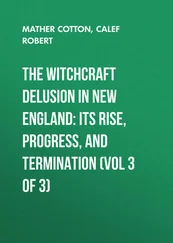It has not, however, explained the connection between the quantum realm and the classical realm. “So long as the wave packet reduction is an essential component [of quantum mechanics],” the physicist John Bell observed, “and so long as we do not know when and how it takes over from the Schrödinger equation, we do not have an exact and unambiguous formulation of our most fundamental physical theory.”
If this is so, why is our most fundamental physical theory fundamental ?
I’m just asking.
Cosmology studies the universe as a whole, and quantum cosmology brings the apparatus of quantum mechanics to bear on the whole of the universe. It is the most speculative of inquiries and it is among the least successful. It seems to tempt physicists to a certain gracelessness.
Considering the cosmological argument, the physicist Victor Stenger scoffs that it is the “last resort of the theist who seeks to argue for the existence of God from science and finds all his other arguments fail.” Sheer chutzpah, if I may use the Greek for cheek. It is Stenger who is arguing against the existence of God “from science.” The result, as one might expect, is unedifying. “Why,” Stenger asks, “is there God rather than nothing?” It is what physicists always ask before they have thought about what they are asking.
If God must exist, the question why God does exist answers itself. Must is must.
Having rejected Aquinas, Stenger is persuaded that “we can give a plausible scientific reason based on our best current knowledge of physics that something is more natural than nothing!” The appeal to what is natural elicits an old urge among physicists to possess the concept of naturalness voluptuously. But it is worth remembering that what is at issue is not whether something is more natural than anything, but why the universe exists at all. Naturalness has nothing to do with it.
Oxford’s Peters Atkins has attempted to address this issue. “If we are to be honest,” he argues, “then we have to accept that science will be able to claim complete success only if it achieves what many might think impossible: accounting for the emergence of everything from absolutely nothing.” Atkins does not seem to recognize that when the human mind encounters the thesis that something has emerged from nothing, it is not encountering a question to which any coherent answer exists. His confidence that a scientific answer must nonetheless be forthcoming needs to be assessed in other terms, possibly those involving clinical self-delusion.
Among physicists, the question of how something emerged from nothing has one decisive effect: It loosens their tongues. “One thing [that] is clear,” a physicist writes, “in our framing of questions such as ‘How did the Universe get started?’ is that the Universe was self-creating. This is not a statement on a ‘cause’ behind the origin of the Universe, nor is it a statement on a lack of purpose or destiny. It is simply a statement that the Universe was emergent, that the actual Universe probably derived from an indeterminate sea of potentiality that we call the quantum vacuum, whose properties may always remain beyond our current understanding.”
It cannot be said that “an indeterminate sea of potentiality” has anything like the clarifying effect needed by the discussion, and indeed, except for sheer snobbishness, physicists have offered no reason to prefer this description of the Source of Being to the one offered by Abu al-Hassan al Hashari in ninth-century Baghdad. The various Islamic versions of that indeterminate sea of being he rejected in a spasm of fierce disgust. “We confess,” he wrote, “that God is firmly seated on his throne. We confess that God has two hands, without asking how. We confess that God has two eyes, without asking how. We confess that God has a face.”
So long as frank confessions are being undertaken, I must confess that a God looking agreeably like me makes precisely as much sense as an “indeterminate sea of potentiality,” with the additional advantage that He is said to be responsive to prayer.
Having begun with Stenger, I might as well finish him off. Proposing to show how something might emerge from nothing, he introduces “ another universe [that] existed prior to ours that tunneled through…to become our universe. Critics will argue that we have no way of observing such an earlier universe, and so this is not very scientific” (italics added).
This is true. Critics will do just that. Before they do, they will certainly observe that Stenger has completely misunderstood the terms of the problem that he has set himself, and that far from showing how something can arise from nothing, he has shown only that something might arise from something else. This is not an observation that has ever evoked a firestorm of controversy.
A man must really know his own limits, as Clint Eastwood observed.
The Sea of Indeterminate Potentiality, and all cognate concepts, belong to a group of physical arguments with two aims. The first is to find a way around the initial singularity of standard Big Bang cosmology. Physicists accept this aim devoutly because the Big Bang singularity strikes an uncomfortably theistic note. Nothing but intellectual mischief can result from leaving that singularity where it is. Who knows what poor ideas religious believers might take from cosmology were they to imagine that in the beginning the universe began?
The second aim is to account for the emergence of the universe in some way that will allow physicists to say with quiet pride that they have gotten the thing to appear from nothing, and especially nothing resembling a deity or a singularity.
This is the province of ideas first advanced by Stephen Hawking and James Hartle and later by Hawking, Ian Moss, and Neil Turok. The details may be found in Hawking’s bestselling A Brief History of Time, a book that was widely considered fascinating by those who did not read it, and incomprehensible by those who did. Their work will seem remarkably familiar to readers who grasp the principle behind pyramid schemes or magical acts in which women disappear into a box only to emerge as tigers shortly thereafter.
Quantum mechanics of the old-fashioned kind assesses the behavior of particles, chiefly by showing that particles are not particles at all but a kind of probabilistic smear. In quantum cosmology, the particles are gone. Gone as well is the classical form of Schrödinger’s equation, though its domestic companion, a wave function taking universes as its objects (more or less), also operates in terms of probabilities.
Quantum cosmology dispenses with the Copenhagen interpretation’s queer distinction between the quantum world and the classical world, wherein the electron belongs to the quantum world, the physicist to the classical world. There are no classical physicists loitering about quantum cosmology, and no classical world either. It is quantum mechanics all the way down, and, of course, all the way up as well.
Now, when Schrödinger first came to appreciate the mysteries of quantum theory, he devised a thought experiment to explain his own perplexity. Imagine that a cat has been placed in a sealed container, together with a device that if it goes off will kill it—a revolver, say, or some sort of radioactive pellet. Whether the device goes off is a matter of chance. So long as no one is looking, the cat exists in a superposition of quantum states, at once half dead (the gun might fire) and half alive (it might not). As soon as an observer peeks into the box, that superposition gives way. That cat is either dead or alive and there are no two ways about it. Schrödinger thought the idea of a cat both alive and dead intellectually discouraging.
Читать дальше













